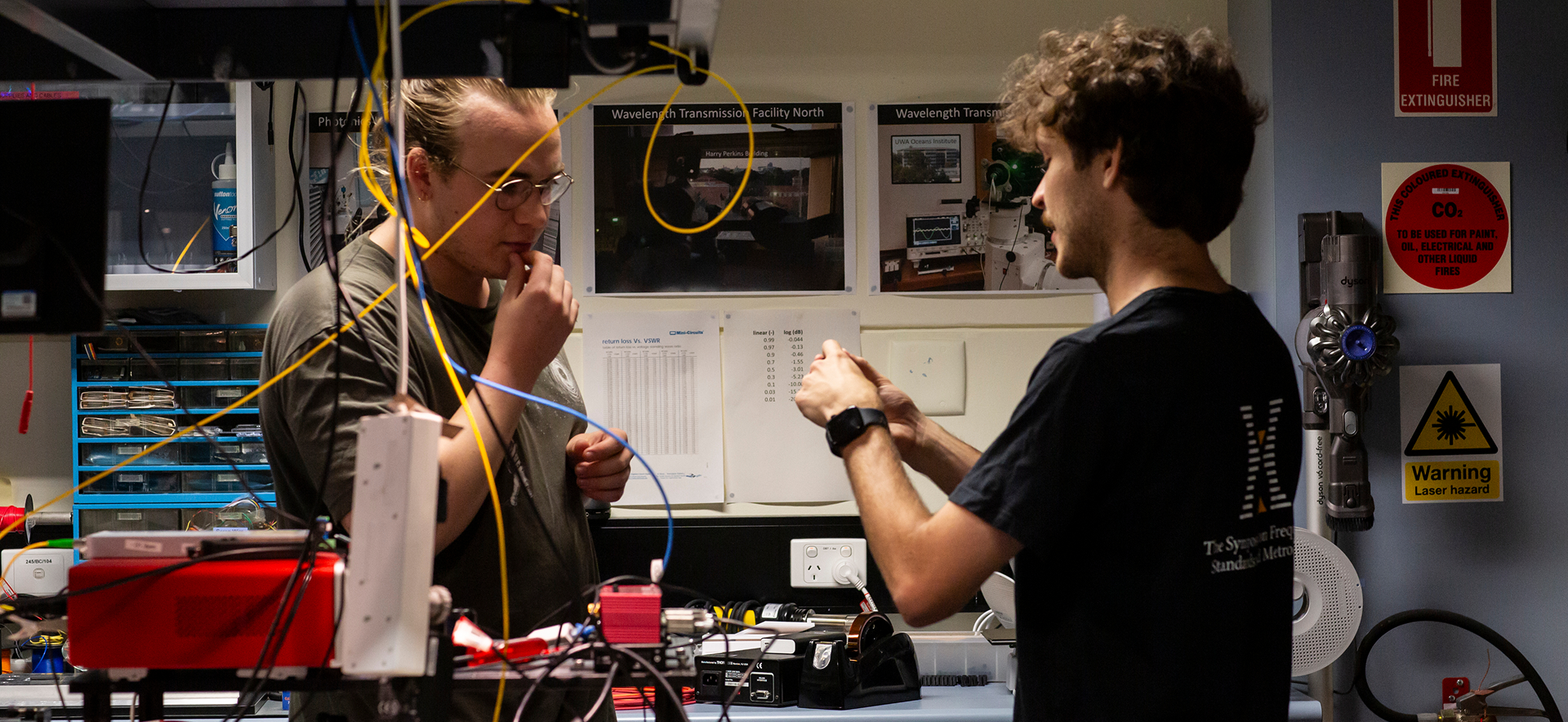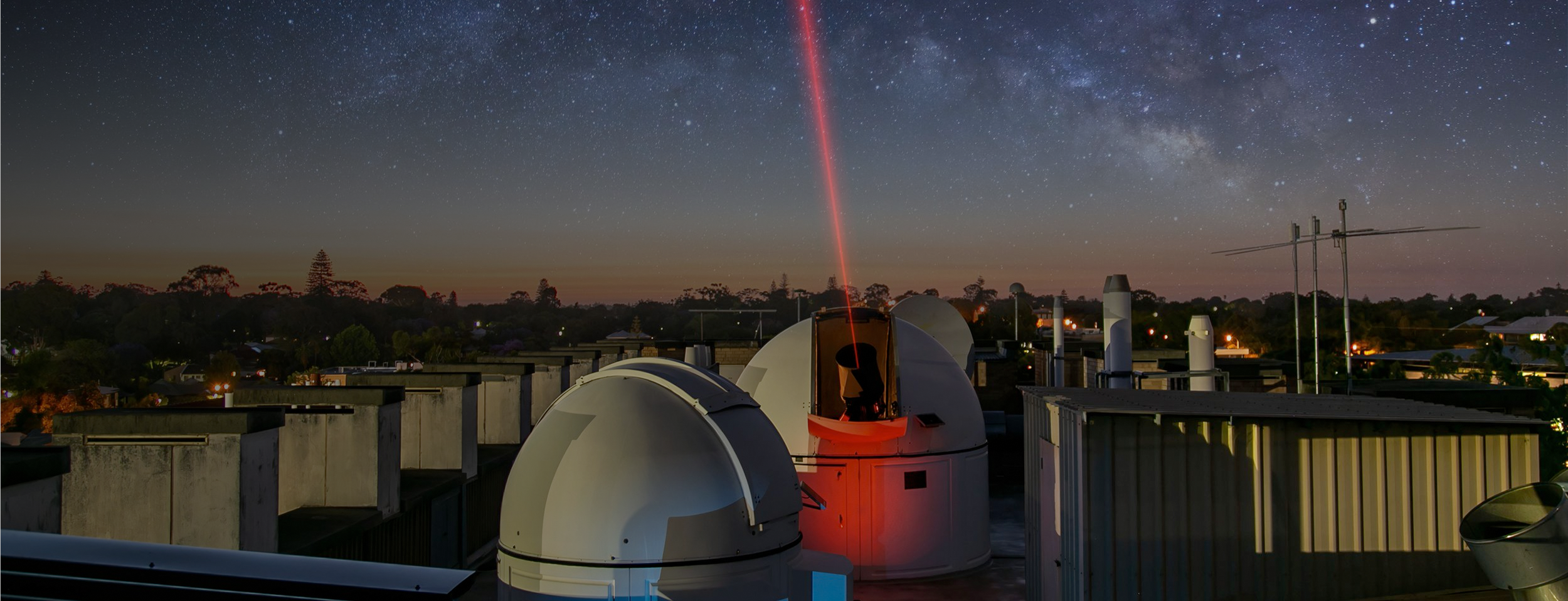
Projects | PhD Projects | TeraNet Papers
TeraNet Related Papers
World-leading Research published by the TeraNet team.
Recent Publications
Explore the research outputs of the TeraNet project
Free-space optical-frequency comparison over rapidly moving links
Free space optical technology promises to revolutionize point-to-point communications systems. By taking advantage of their vastly higher frequencies, coherent optical systems outperform their radio counterparts by orders of magnitude in achievable data throughput, while simultaneously lowering the required size, weight, and power (SWaP), making them ideal for mobile applications.
Optimal Design of Small-Aperture Optical Terminals for Free-Space Links
We present the generalised design of low-complexity, small-aperture optical terminals intended for kilometre-scale, terrestrial, free-space laser links between fixed and dynamic targets.
Stabilized free space optical frequency transfer using digitally enhanced heterodyne interferometry
Free-space continuous-wave laser interferometry using folded links has applications in precision measurement for velocimetry, vibrometry, optical communications, and verification of frequency transfer for metrology.
Atmospheric turbulence characterization with simultaneous measurement of phase, angle of arrival, and intensity in a retroreflected optical link
Free-space optical transmission through the Earth's atmosphere is applicable to high-speed data transmission and optical clock comparisons, among other uses.
High-bandwidth coherent optical communication over 10.3 km of turbulent air
We demonstrate 111.8 Gb/s coherent optical communication throughput over a 10.3 km folded free-space laser range. Folded links are low complexity to establish and provide a high uptime for testing equipment.
Towards optical frequency geopotential difference measurements via a flying drone
Geopotential and orthometric height differences between distant points can be measured via timescale comparisons between atomic clocks. Modern optical atomic clocks achieve statistical uncertainties on the order of 10−18, allowing height differences of around 1 cm to be measured.
Adaptive optics LEO uplink pre-compensation with finite spatial modes
Adaptive optics pre-compensation of free-space optical communications uplink from ground to space is complicated by the “point ahead angle” due to spacecraft velocity and the finite speed of light, as well as anisoplanatism of the uplink beam and the wavefront beacon.
Ground-to-Drone Optical Pulse Position Modulation Demonstration as a Testbed for Lunar Communications
Free-space optical (FSO) communication promises to bring fibre-like speeds to data transmissions between ground, sky and space. This is becoming more important in light of the increasing volume of data collected by aircraft and spacecraft.
Demonstration of 100 Gbps coherent free-space optical communications at LEO tracking rates
Free-space optical communications are poised to alleviate the data-flow bottleneck experienced by spacecraft as traditional radio frequencies reach their practical limit. While enabling orders-of-magnitude gains in data rates, optical signals impose much stricter pointing requirements and are strongly affected by atmospheric turbulence.
Ultrastable Free-Space Laser Links for a Global Network of Optical Atomic Clocks
A global network of optical atomic clocks will enable unprecedented measurement precision in fields including tests of fundamental physics, dark matter searches, geodesy, and navigation. Free-space laser links through the turbulent atmosphere are needed to fully exploit this global network, by enabling comparisons to airborne and spaceborne clocks.
Angle-of-arrival variability of retroreflected lasers despite atmospheric reciprocity
Corner cube retroreflectors are commonly used as cooperative targets in free-space laser applications. The previous literature suggests that due to path reciprocity, a retroreflected beam is self-corrected across a turbulent atmosphere and should show no angle-of-arrival variability in the near field.
Point-to-point stabilized optical frequency transfer with active optics
Timescale comparison between optical atomic clocks over ground-to-space and terrestrial free-space laser links will have enormous benefits for fundamental and applied sciences. However, atmospheric turbulence creates phase noise and beam wander that degrade the measurement precision.
Methods for coherent optical Doppler orbitography
Doppler orbitography uses the Doppler shift in a transmitted signal to determine the orbital parameters of satellites including range and range rate (or radial velocity). We describe two techniques for atmospheric-limited optical Doppler orbitography measurements of range rate.
Stabilized Free-Space Optical Frequency Transfer
The transfer of high-precision optical frequency signals over free-space links, particularly between ground stations and satellites, will enable advances in fields ranging from coherent optical communications and satellite Doppler ranging to tests of General Relativity and fundamental physics.

“Western Australia’s geography and climate means it’s one of the best places in the world to host these ground stations.”
— Professor Sascha Schediwy
